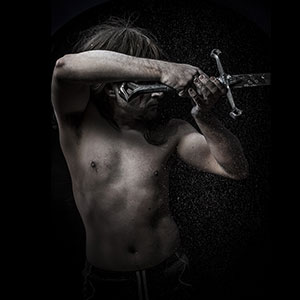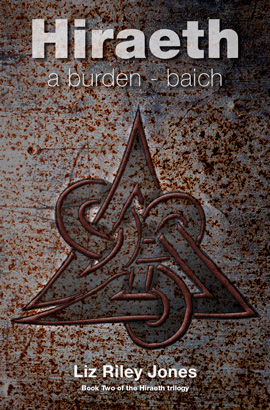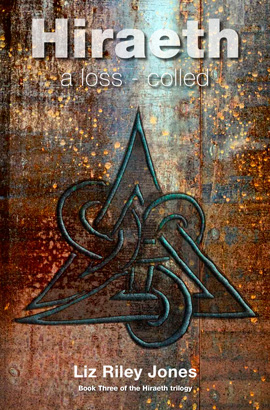The Irish Texts


The Celts
The History
The People
The Women
The Myths
The History
The Mabinogion
Purchase a Book
The Welsh word ‘cyfarwydd’ means ‘one who knows’ but has come to mean ‘story-teller’. Undoubtedly, all the early Welsh literature, both poetry and prose, would have been recited and handed down by word of mouth. It was only later, with the coming of Christianity to Britain that monks wrote down the native folklore.
Taliesin
Taliesin was a Welsh poet, whose date of birth is unknown, but who was thought to have written his poetry in the 6th century AD. Manuscripts of his poetry have been preserved in Llyfr Taliesin (The Book of Taliesin). The bard was said to be a beautiful man, and so good at poetry and oration that legends grew up around his birth and life.
Taliesin was originally called Gwion, and a servant to a witch, Ceridwen, who was learned in arts of enchantment, magic, and divination. One day, Ceridwen was preparing a special concoction to provide her extremely ugly son with supernatural powers. It was a difficult and cunning recipe, alleged to bring great learning and prophecy to the person who drank the first three drops. While Ceridwen slept, Gwion watched the cauldron and when three drops of the elixir sprang from the cauldron, it was Gwion and not her son who swallowed them. Gwion immediately became a powerful and wise magician himself, and ran away knowing that Ceridwen would seek revenge. As she pursued him he became a hare and she became a greyhound. He became a fish and she an otter. He turned into a bird and she became a hawk. Eventually Ceridwen cornered him in a barn where Gwion turned himself into a grain of corn and was promptly eaten by the witch, who had transformed into a hen.
Having eaten him, Ceridwen discovered that she was pregnant, and resolved to kill the child as soon as it was born. She could not bring herself to do it though, and put the baby into a basket on a river. He was found by a passing nobleman and named Taliesin, ‘Shining brow’. In real life, Taliesin was a court bard, someone who worked under the patronage of a monarch, telling stories about them for their benefit.
Aneirin
Aneirin was also a bard and poet, working around a similar time to Taliesin. Aneirin is famous for an exceptional poem, ‘Y Gododdin’, about the famous battle of Catraeth - or Catterick, fought in 598. The manuscript that contains the poem, Llyfr Aneirin, dates from 1265 AD.
The Mabinogion is something of a compendium, containing most of the texts above but depending heavily on the Red and White books. They were collated and translated by Lady Charlotte Guest, an English woman who married a Welshman and became fascinated with Welsh culture and language. Guest was a great linguist, having learnt Greek, Hebrew and Persian as a child, but as a Welsh learner, Guest’s translation can be thought of as a little ‘broad stroke’. The work was an instant success, and put early Welsh literature onto the world stage. Since then, native Welsh speakers have honed the translations into great works of art, enabling English speakers to enjoy the stories in more depth and with greater empathy for the written Welsh texts.
This collated version of the texts is roughly split into groups: The Four Branches, the Native Tales and the Three Romances.
Pedair Cainc y Mabinogi -The Four Branches of the Mabinogion
In these tales, we meet some of the best-known characters from Welsh folklore: Pwyll, Rhiannon, Bendigeidfran, Branwen, Math, Aranrhod, Gwydion, Lleu and Blodeuwedd. Pryderi is the only constant, being born in the first and dying in the last. These characters have supernatural powers, yet suffer from human frailties that inevitably cause tragedy. Their relationships are poignantly drawn and exist in gripping narratives.
Native Tales and Legend
How Culhwch Won Olwen
Rhonabwy’s Dream
The Dream of the Emperor Macsen
Lludd and Llefelys
Despite their titles, the first two in this group deal extensively with Arthur and the exploits of his knights while he holds court in Celli Wig, Cornwall. In fact, ‘Culhwch and Olwen’ is the earliest recorded Arthurian tale written in Welsh. All the stereotypes are here, the bravest warriors, the most beautiful women, and yet, the writing is beautiful and beguiling. Rhonabwy’s dream is strange, surreal and quite possibly a satire on the genre.
The second two in this group are a strange mixture of myth and history, reinterpreting the sovereignty of the British Isles from a Welsh point of view.
Romances
Geraint son of Erbin
The Lady of the Well
Peredur son of Efrog
This group is referred to as the ‘Romances’ as they all exhibit the same characteristics of the chivalric code. Concerned very much with King Arthur and his queen Gwenhwyfar, the various heroes are sent on quests that test their bravery and devotion, while keeping a distinctly Welsh flavour to the tone of the narrative.



Book One
Hiraeth
a mark - marc
Book Two
Hiraeth
a burden - baich
Book Three
Hiraeth
a loss - colled
Llyfr Du Caerfyrddin - The Black Book of Carmarthen
This manuscript from around 1250 AD is believed to be the earliest surviving Welsh text and is kept in the National Library of Wales. It contains mostly poems and songs, but it also refers to Arthur, Myrddin and other Welsh heroes, linking it to other texts of the period.
Llyfr Gwyn Rhydderch - The White Book of Rhydderch
This manuscript was written about 1350 and is a key component of the Mabinogion. It is kept in the collection of the National Library in Aberystwyth.
Llyfr Coch Hergest - The Red Book of Hergest
Written on vellum between 1382 -1410, this manuscript constitutes an equally large amount of the Mabinogion and is kept at the Bodleian library in Oxford.
Trioedd Ynys Prydein – Triads of the Island of Britain
These manuscripts are fragments and relate to Celtic mythology and folklore. They are called Triads because of the use of three as reference; the three generous princes of Britain, the three tribal thrones of Britain etc.
Early Irish texts are much more extensive than the Welsh, incorporating Irish mythology and folklore. The source manuscripts are: Lebor na hUidre, written in the twelfth century and kept in the Royal Irish Academy, the Book of Leinster, also written in the twelfth century and kept at Trinity College, Dublin, and the Rawlinson manuscript kept in the Bodleian. Early Christian monks transcribed these texts from much earlier stories, some as early as the sixth – eighth centuries. Later sources are the Yellow Book of Lecan, the Great Book of Lecan, the Book of Hy Many and the Book of Ballymote, all transcribed in the early fifteenth century. The mythologies from the source material have again been collated and grouped.
The Ulster Cycle
The stories from this cycle are set around the reign of Conchobar mac Nessa who was thought to have reigned in this part of Ireland about the time of Christ. The stories are swash-buckling adventures, brimming with sex and violence, love and hate. The characters are rounded individuals, each one wrestling with individual conflict.
One of the liveliest and most influential stories in the cycle is the Táin Bó Cúailgne or 'Cattle Raid of Cooley', which charts a war, started by Queen Medb of Connacht, over the theft of a prize bull. Her chief opponent is Cúchulainn, ‘Hound of Ulster’, the king’s nephew and all round hero. Imbued with superhuman strength and charisma, Cúchulainn has become the iconic figure of Gaelic myth in Ireland, and a talisman for the rebellious spirit.
The Mythological Cycle
This set of tales deals with the Irish origin myth, from the Goddess Danu, and the adventures of her supernaturally gifted offspring - Tuatha Dé Danann.
The Fenian Cycle
This set of stories deal with Fionn mac Cumhaill and his elite band of warriors/mercenaries, the Fianna. These stories also contain quests, kingship, double-dealing and love triangles.
The Historical Cycle
At one time called the ‘Cycle of the Kings’ these stories deal with the complicated genealogy of the High Kings of Ireland. Originally, it was the duty of court bards to express the legitimate genealogy of the King in order to reinforce his birthright. Eventually, these too were written down.


